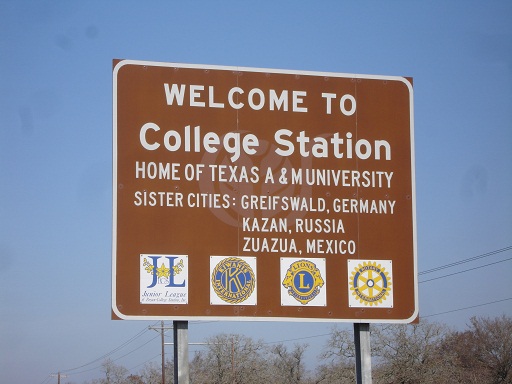College towns are home to academic opportunities, new social experiences, crowds of football fans — and plenty of young adults in need of financial services. By touting conveniences such as on-campus ATMs, student checking products and financial education resources, snagging new members is usually not a problem for credit unions located in college towns. But when student members graduate, find jobs and move out of town, credit unions often face abandonment.
Five college town credit unions from across the country told Credit Union Times what they're doing to boost their member retention rates.
From offering remote deposit capture to showing up at local job fairs to marketing auto loans, they're implementing strategies with the same goal in mind: make sure their members stay members after they've walked across the graduation stage.
Click through the slideshow to find out what these credit unions are doing to convince students that membership should last a lifetime.
1. USC Credit Union (Los Angeles, $361 million in assets)
Los Angeles is much more than a university town, but with more than 17,000 undergraduate students at the University of Southern California, USC Credit Union has many opportunities to do business with young adults.
The 58,700-member USC CU's efforts to retain members post-graduation have paid off — USC alumni comprise its largest member base, and more than 80% of its alumni members started out as student members, according to Michael Kim, chief marketing officer for USC CU.
Kim said USC alumni represent the credit union's largest deposit base and its second largest loan base. To help convince each graduating class to stay on as members, the credit union offers special promotions to new graduates and focuses on educating student members about the use of electronic banking services and the Co-Op Shared Branching Network.
USC CU offers a mobile banking app for iPhone, Android and Blackberry, and is gearing up to launch a remote deposit capture service.
“Probably our biggest challenge has been overcoming the notion that USC CU is great while you're on campus and that access becomes limited once students graduate and move out across country,” Kim said. “It's our goal to get students so accustomed to all of our mobile and electronic services that the thought of closing their account never enters their mind. Coupled with our great value and service, it becomes a no-brainer to stick with their alma mater's credit union.” 
2. Alabama Credit Union (Tuscaloosa, Ala., $504 million in assets)
The 47,200-member Alabama CU serves two universities down South: Tuscaloosa's University of Alabama, home of the national champion Crimson Tide football team, and the University of Alabama-Huntsville.
Alabama CU Marketing Coordinator Kelley Jones explained that while retaining members post-graduation has always been a challenge, it can be done. As an example, she noted the credit union's president/CEO, Steve Swofford, joined the credit union as a University of Alabama student.
In its 11 years of serving students at these two state university system schools, the credit union has developed a number of member retention strategies. First, its staff focuses on providing personalized service to members while they're in college – the kind of service they won't want to let go of when they graduate, Jones said.
“This (service) starts with our three on-campus branches, two serving the University of Alabama and one serving University of Alabama-Huntsville,” Jones said. “We market to these students and their parents heavily when they arrive on campus as freshmen and work diligently to quickly open their accounts during their busy freshman orientation visits.”
Alabama CU's product list includes online banking, mobile apps, e-statements, online bill pay, remote deposit capture, platinum credit cards with limits of $100 and participation in the Co-op Shared Branching Network, all of which offers convenience to students traveling between Tuscaloosa and their parents' homes, Jones said.
Online account opening services will soon be added to the menu. And to make the transition easy for members traveling or moving outside of Alabama CU's primary service area, the credit union waives its usual 30-day credit union service center account access restriction.
To stay fresh in new graduates' minds, Jones said the credit union participates in job fairs and graduation events at the two universities, and markets special offers to this particular demographic.
“Overall, retaining members post-graduation is a difficult task due to students who move out of state,” Jones said. “But if a student remains in our area, we usually have a lifelong member.” 
3. Arizona State Credit Union (Phoenix, $1.35 billion in assets)
Arizona State University is also connected to the 124,700-member Arizona State CU. The credit union reaches out to students of the university, which has campuses in Phoenix, Tempe and Mesa, with targeted offers of credit and other financial products.
Some of its more forward-thinking services include mobile banking, mobile alerts and atHome Deposit, a remote deposit capture solution.
Arizona State CU's online and mobile banking solutions are key to retaining recent graduates who move out of the credit union's primary service area, said Paul Stull, Arizona State CU's senior vice president of strategy and brand.
“Relocation used to be a big issue with graduating students,” Stull said. “However, that is much less of a problem today with the variety of electronic services available. Debit cards, iPhone apps, online banking and bill pay, as well as the ability to open and fund accounts online, are very portable features and are imperative to students' relationships with their credit unions.”
Stull also said the credit union focuses on one primary product in its quest to keep members after they graduate — the auto loan. Arizona State CU's auto loan program offerings include a vehicle service plan, a loan protection plan and a guaranteed asset protection plan.
“The most important method of retention is with an auto loan,” Stull said. “People in this segment are ready for their first job, and for many of them, an automobile is a big part of that transition.” 
4. Idaho State University Federal Credit Union (Pocatello, Idaho, $135 million in assets)
Idaho State University FCU expanded its field of membership from Idaho State University faculty and staff to include university students and alumni, as well as the faculty, staff and students of many southeastern Idaho school districts, in 1969.
Now with 17,600 members, the credit union faces unique member retention challenges because the Idaho State University student body is non-traditional. While some students attend for four years, many choose to pursue a degree that only takes between eight months and two years to finish, in a field like cosmetology, medical assisting or welding, explained Rick Cheatum, the credit union's marketing manager.
Cheatum said Idaho State University students also tend to be older than those at traditional, four-year universities, in part because in Pocatello, some high school graduates attend college following a church mission or military service.
“In some ways this has helped us, because non-traditional students might have families,” Cheatum said. “They might be buying homes, or their second or third cars, so there is a need for financial products.”
The credit union strives to build relationships with members while they're in college, Cheatum said. It pushes its online services, as well as its all-in-one student ID/debit card product, he said.
“Some students are only here for a few months, so we do our best to capture them as freshmen,” Cheatum said. “The relationship that we build depends on how long they are in the university setting.” 
5. Aggieland Credit Union, College Station, Texas (a branch of Greater Texas Federal Credit Union, Austin, Texas, $507 million in assets)
The home of the Texas A&M University Aggies is also the home of Aggieland CU, a branch of the 67,600-member Greater Texas FCU. In 1992, Greater Texas FCU acquired the College Station-based Texas Aggie FCU; its name was changed two years later to Aggieland CU.
Aggieland CU caters to university student members at three of its Texas branches — two in College Station and one in Bryan. Like many university-oriented credit unions, Aggieland CU focuses on marketing its remote banking options to keep serving members when they graduate and move out of College Station, said Jason Goodman, the credit union's vice president and a Texas A&M University graduate.
The credit union's remote services include account access via the Co-Op Shared Branching Network, online banking, online bill pay, remote deposit capture, electronic statements and online account transfers.
“It's a constant focus and effort to continue the relationship with our members so that we are there for their needs as they move forward in life,” Goodman said.
© Touchpoint Markets, All Rights Reserved. Request academic re-use from www.copyright.com. All other uses, submit a request to [email protected]. For more inforrmation visit Asset & Logo Licensing.







